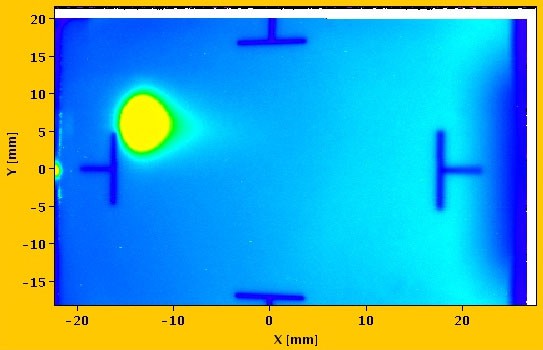
Physicists at the CERN laboratory near Geneva are starting the week with a spring in their steps, having successfully injected the first protons into the Large Hadron Collider (LHC) over the weekend. The test saw protons travelling 3 km through one of the LHC’s eight sectors, which bodes well for the start-up proper on September 10.
“There are lot of very happy people here today,” says CERN spokesperson James Gillies. “The test couldn’t have gone better.”
The main purpose of the injection test was to synchronize the LHC with the smaller accelerators that will feed it with protons. When the machine is up and running, pulsed magnets have to “kick” the proton bunches from one accelerator into another with nanosecond precision.
At 15:20 on Friday, a small bunch of protons was successfully kicked out of the Super Proton Synchrotron (SPS) using a pulsed magnet and sent down a 2.7 km-long transfer line towards the LHC. Then at 21:40, after a few hours spent optimizing the process, one bunch was kicked out of the transfer line into the LHC where — to the surprise of many — it travelled about 3 km until it was stopped by a screen (see image).
“The passage of the beam first time caused some excitement in the control room, and champagne was rolled out,” machine operator Roger Bailey told physicsworld.com. “We expected to have to thread the protons round using position detectors and local correction magnets, but now we know that the fields and polarities of several hundred superconducting magnets are pretty much okay.”
The test was repeated several times on Saturday, giving the operations team lots of data to help make the start-up as smooth as possible. A similar test for protons in the other (counter clockwise) direction is planned for the weekend of August 22.
Start up fever
In its search for new fundamental particles, the LHC will produce the highest energy densities ever created in a lab. But the project has not been a smooth ride, with inevitable technical problems and cost overruns that have forced the machine to slip at least five years behind schedule.
Now, after nigh-on three decades — half of which has been spent building the CHF6bn collider and its four gargantuan detectors — CERN is on the finishing stretch. Almost all of the 1600 superconducting magnets that will guide the protons around the LHC ring have been cooled to their operating temperature of 1.9 K. The next step is some 1400 hardware and electrical tests that must be performed over the next few weeks until the machine is finally ready to go on September 10.
On the start-up day itself, the 24/7 operations team will attempt to thread a single, low-intensity bunch containing a few billion protons all the way around the 27 km circumference of the LHC. Following that they will do the same in the other direction, taking perhaps a few days in total. Then they will adjust magnets so that the protons can circulate happily for periods of hours without veering off course.
Next, strong focussing magnets will bring the counter-rotating beams into collision at the LHC’s four interaction points (requiring the beam to be configured in four bunches). Initially the beams will have an energy of 450 GeV (the energy at which protons are injected from the SPS), producing 900 GeV collisions. But the target this year is to provide record-breaking 10 TeV collisions (5 TeV per beam) with 43 bunches each containing a few tens of billion protons. If all goes well, the first LHC data could be streaming out of the experiments just in time for the official LHC inauguration on October 21.
The LHC will be shut down for the winter, during which time the main bending magnets will be “trained” to handle beams at the full energy of 7 TeV (producing 14 TeV collisions) in March or April 2009. When the machine is running at full whack, nearly 3000 bunches each containing up to 100 billion protons could be hurtling around in each direction, producing half a billion collisions every second. Picking through the debris, physicists hope to find traces of particles such as the Higgs boson — which would complete the standard model of particle physics — or even more exotic entities such as black holes and extra dimensions. However, it will likely take at least a year for physicists to amass enough data and to understand their detectors well enough to be sure what they’re seeing is real.



